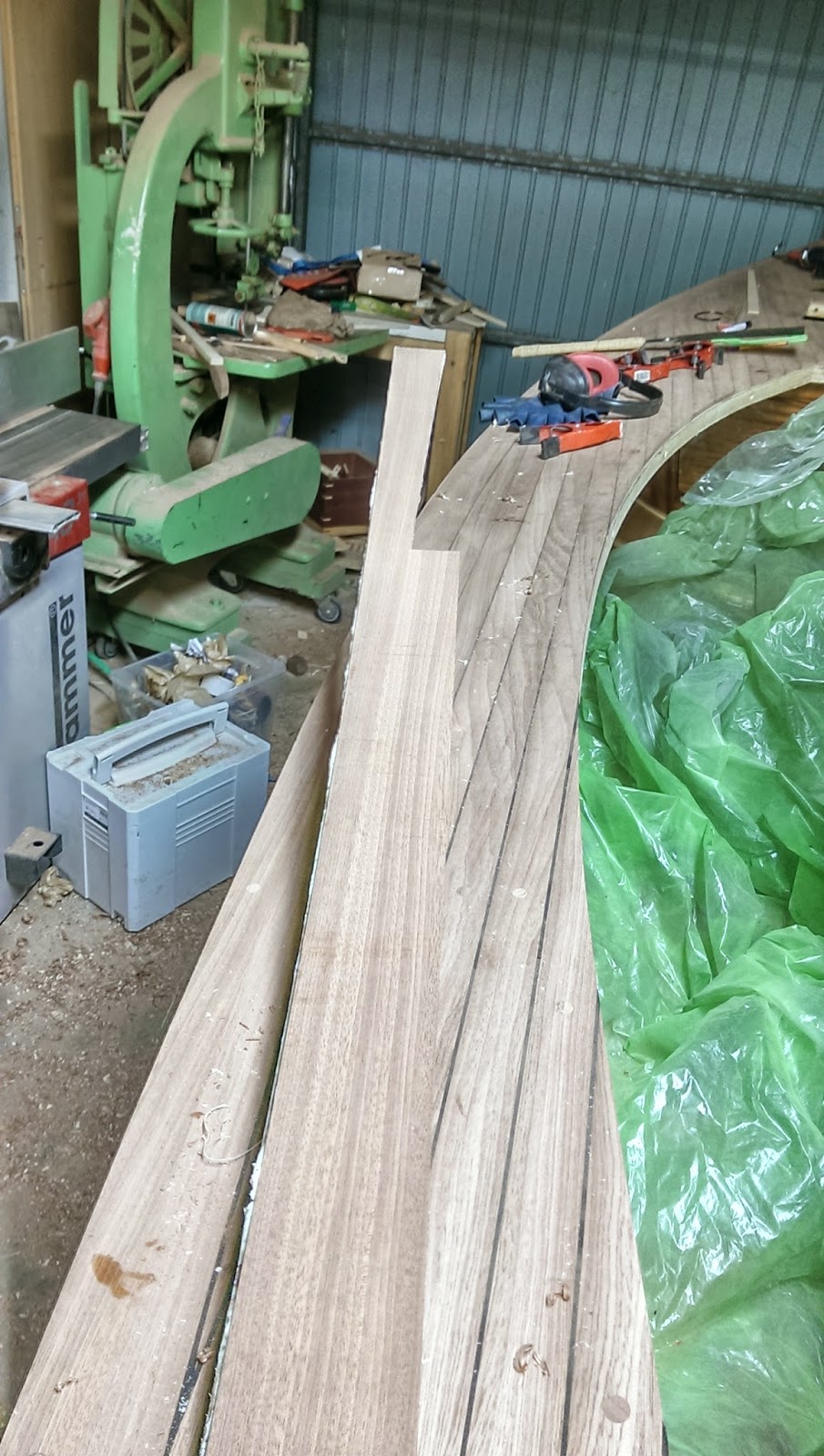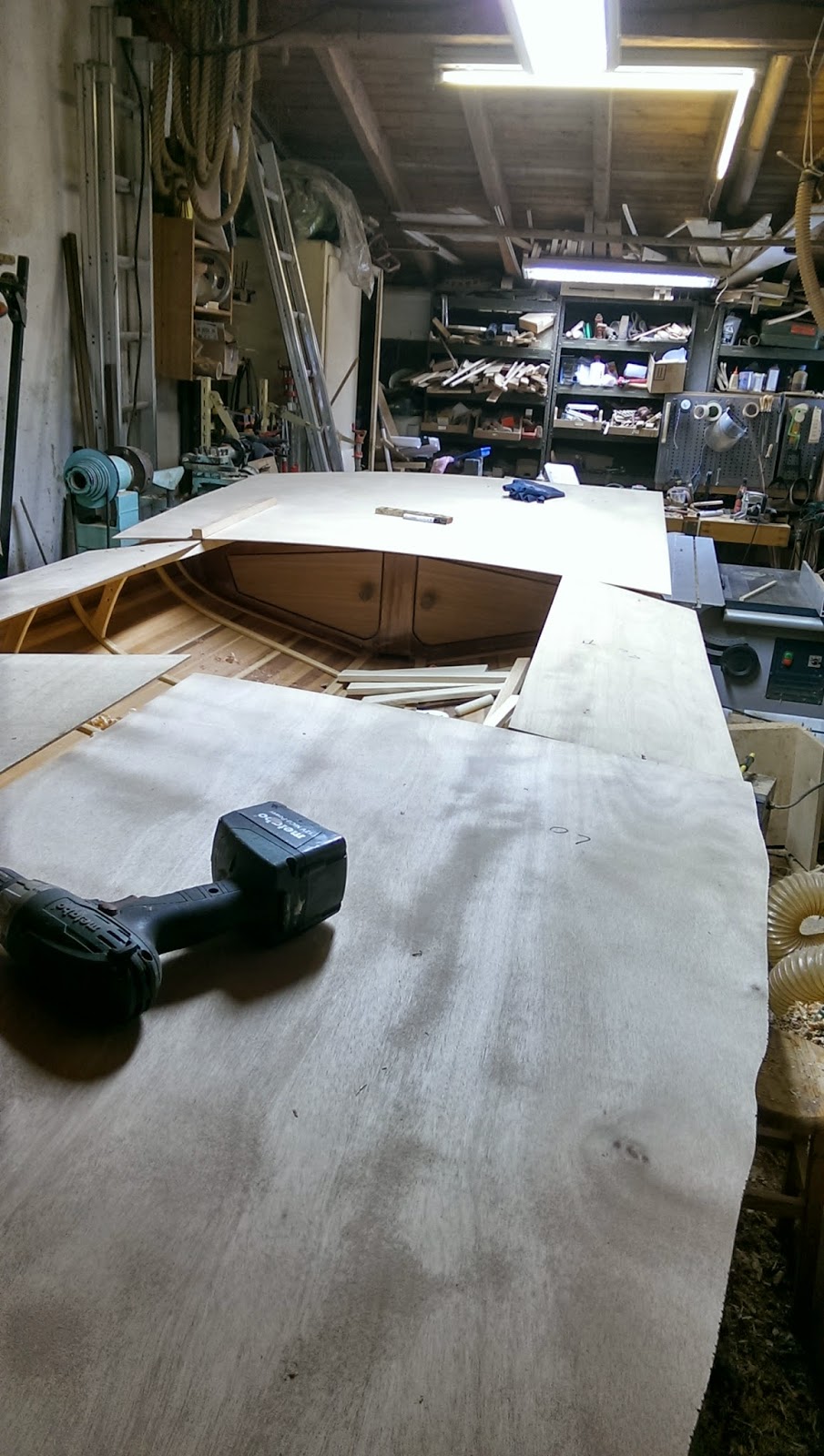They plywood sub-deck has been glued in place and all the edges trimmed flush with the router. Next was quite a bit of table-saw work on the Mahogany, cutting a decent number of 8 mm thick, 33 mm wide (after planing) planks
 |
| 6 meter long, handling those guys saves plenty of money for the fitness club. |
 |
| just good that the full length was only required for the outside planks (and the toerails, which were also already cut and planed) |
 |
| Creating the outer deck planks from 2 33 mm planks. |
 |
| clamp-gathering... |
 |
| and in place, glued, screwed and plugged |
 |
| from the bow... |
 |
| now the planking starts. A lot of discussion went into the question of the planks should follow the outer curve of the deck (classic Yacht-deck) or just be straight. At the end the majority of the votes went for straight, which now I also think fits the period of the original Melonseed better. |
 |
| Getting there... |
 |
| and the sealing - Sika 291, amazing stuff... |
 |
| the sanding process was less bad than expected. Not even a full day. Turned out the best combination for me is belt sander with 8 grit to get a flat surface and take the Sikaflex off. Just need to make sure to NEVER stay in one place with the belt sander. |
 |
| The belt sander activity was followed-up with a lot of very healthy manual sanding / leveling with a longboard with 100 grit sandpaper. |
 |
| self-made long board in place. |
 |
| the result is approved... |
 |
| trimming the edges with the trim bit in the router |

















































